Vented vs. Ventless Fireplace Explained: Finding the Perfect Fit for Your Home
When it comes to modern home design, vented gas log fireplaces have ignited a trend toward both elegance and efficiency. As homeowners seek the perfect blend of aesthetic appeal and functional warmth, the choice between vented gas logs and vent-free gas logs becomes pivotal. This decision isn't just about selecting a heating solution; it's about enhancing the ambiance and comfort of your living space while considering safety and air quality.

Vented gas fireplaces offer the traditional look and feel of a real fire, channeling exhaust outside to keep indoor air clean. Ventless gas fireplaces, celebrated for their efficiency and ease of installation, provide a versatile heating solution without the need for external venting. However, they raise important considerations regarding ventilation and indoor air quality.
Join me as we explore the pros and cons of both the vented gas fireplace logs and ventless gas fireplaces, guiding you through the essential information to make an informed choice for your home. Whether you're drawn to the authenticity of vented fireplaces or the convenience of ventless models, this guide is your roadmap to finding the ideal gas fireplace that not only warms your space but also enriches your home's atmosphere.
Understanding Gas Fireplaces
Gas log fireplaces have surged in popularity, becoming a staple in modern homes for their blend of convenience, efficiency, and aesthetic appeal. Unlike traditional wood-burning fireplaces, gas fireplaces (also known as gas logs) offer the warmth and ambiance of a fire with the flip of a switch, eliminating the need for chopping, storing, and burning wood. This ease of use, combined with minimal maintenance and cleaning, positions gas logs as an attractive alternative for contemporary living.
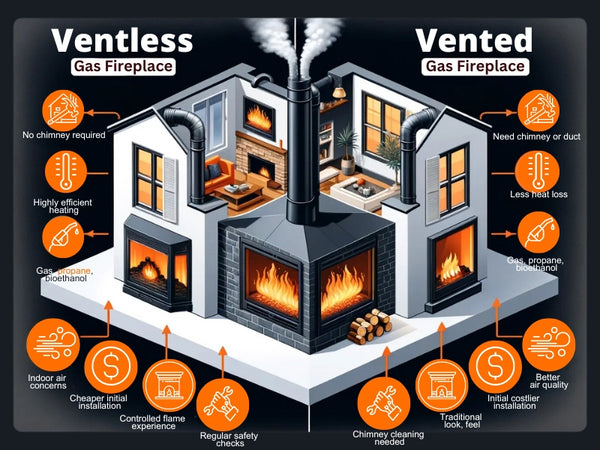
Vented Gas Fireplaces
Vented gas fireplaces embody the essence of traditional hearth warmth with the modern convenience of gas fuel. They operate by drawing air from outside for combustion, then venting the exhaust back out, into fresh air ensuring that the indoor air quality remains pristine. This process mimics the natural airflow of a classic wood-burning fireplace, complete with the visual and auditory ambiance of flickering flames and gentle crackles.
The allure of vented gas logs lies in their ability to offer a realistic flame and a traditional fireplace experience without the laborious upkeep of wood burning. The aesthetic appeal is undeniable; non-vented gas logs provide the charm and warmth of a real fire, making them a focal point in any room. Moreover, by venting out toxins, these fireplaces maintain a healthy living environment, free from the concerns of carbon monoxide and other combustion byproducts.
Installation of vented gas fireplaces, however, requires careful consideration. The necessity of a chimney or external venting means that they are best suited for homes where this infrastructure is already in place or can be feasibly added. Professional installation is paramount, not only to ensure the vented gas fireplace operates efficiently but also to uphold the highest safety standards, safeguarding your home and family.
Ventless Gas Fireplaces
Ventless gas fireplaces, also known as non-vented or vent-free, present a modern solution to heating and ambiance, offering significant advantages in efficiency and heat output over an existing wood-burning fireplace. The absence of a need for external venting or a chimney allows these fireplaces to be installed virtually anywhere in the home, providing greater flexibility in design and placement.
The efficiency of ventless fireplaces stems from their ability to circulate all generated heat directly into the room, without any loss, through a chimney or vent. This makes them an incredibly efficient source of supplemental heat. Despite their efficiency, ventless fireplaces are subject to rigorous federal testing and safety standards to ensure they burn cleanly and safely, minimizing the release of emissions into the home.
However, the operation of ventless fireplaces raises certain safety considerations. While they are designed to burn gas cleanly, the importance of installing carbon monoxide detectors and oxygen depletion sensors cannot be overstated, as these devices provide an additional layer of safety. Moreover, adherence to state and local regulations is crucial, as some areas have restrictions or outright bans on ventless fireplaces due to concerns over indoor air quality.
Cost Comparison and Installation Insights
Choosing between a vented gas log set and ventless gas fireplaces involves careful consideration of costs, installation requirements, and long-term financial implications. Here's a breakdown to help navigate these factors:

Initial Costs and Installation
Vented Fireplaces: Higher upfront costs ranging from $3,500 to $8,000, due to the need for a chimney or external venting. Installation is more complex and must be done professionally.
Ventless Fireplaces: More affordable initial investment, with prices between $1,000 and $5,000. Installation is simpler and cheaper, as no chimney or external venting is required.
Running Costs and Energy Efficiency
Vented Fireplaces: Tend to be less energy-efficient, with higher running costs of approximately $0.52 per hour, as some heat escapes through the venting.
Ventless Fireplaces: Highly efficient with lower operational costs of around $0.25 an hour, as they release heat directly into the room without any loss.
Click here to find out how long you can make a propane tank connected to your fireplace last.

Life Expectancy and Maintenance
Both fireplace types have a lifespan of 15 to 25 years.
Maintenance Needs:
- Vented Logs: Require replacement approximately every ten years.
- Ventless Logs: Need replacing more frequently, every 3-5 years.
Health and Safety Considerations
The health and safety of your household are paramount when incorporating a gas fireplace. Here's what you need to know:
Vented Gas Logs/Fireplaces
- Air Quality: By venting outdoors, they maintain indoor air quality.
- Maintenance: Regular cleaning of the chimney or venting system is essential to prevent blockages.
Vent-Free Gas Logs/Fireplaces
Potential Risks: Can emit carbon monoxide and moisture into the home, posing health risks.
Mitigation Strategies:
- Install carbon monoxide detectors.
- Ensure adequate room ventilation.
- Limit operation time to prevent moisture buildup.
Safety Tips for A Gas Fireplace
- Installation: Always opt for professional installation to ensure safety and efficiency.
- Detectors: Equip your home with carbon monoxide and oxygen depletion sensors.
- Clearance: Keep flammable materials at a safe distance from the fireplace.
- Annual Inspections: Schedule yearly checks by a qualified technician to maintain optimal safety and performance.
By understanding these cost and safety considerations, you can make an informed decision that aligns with your preferences, ensuring your gas fireplace adds warmth and charm to your home without compromising safety or financial sensibility.
Aesthetic and Functional Considerations
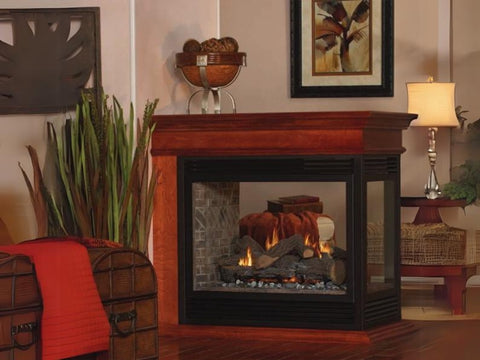
When it comes to enhancing the comfort and ambiance of your home, the choice between buying vented gas logs and ventless gas fireplaces extends beyond mere functionality to include aesthetic appeal and the overall impact on your living space.
Vented vs. Ventless: Aesthetic Appeal
- Vented Fireplaces: Known for their realistic flame, vented options closely mimic the look and feel of a traditional wood-burning fireplace. The open vent allows for a more natural flame movement, creating a cozy and inviting atmosphere.
- Ventless Fireplaces: While ventless models offer a clean and efficient heat source, their flame often lacks the depth and realism of vented models. However, advancements in design have led to more aesthetically pleasing options, making them a viable alternative for those prioritizing efficiency over traditional aesthetics.
But if you prefer double-sided fireplaces, here are our top picks for you.
The Role of Ambiance
The ambiance a fireplace adds to a home is undeniable. A flickering flame not only provides physical warmth but also contributes to a sense of psychological comfort and well-being. The right fireplace can serve as a focal point in a room, drawing family and guests alike to gather and relax in its warmth. Whether vented or ventless, the choice of fireplace can significantly impact the ambiance and aesthetic appeal of your home, transforming it into a haven of comfort and relaxation.
Innovations and Technological Advancements
The world of gas fireplaces is not static; it's constantly evolving with new technologies and innovations that enhance functionality, safety, and environmental impact.
Cutting-Edge Design and Functionality
- Realistic Flame Technology: Newer models of both vented and ventless fireplaces now feature advanced burner designs and detailed ceramic logs or alternative media that produce a more realistic flame pattern and glow.
- Efficiency Improvements: Technological advancements have led to increased fuel efficiency, reducing environmental impact and heating costs.
Smart Features
- Remote Control and Automation: Modern gas fireplaces can be equipped with remote controls, thermostats, and even smartphone apps, allowing users to adjust settings for comfort and efficiency effortlessly.
- Safety Sensors: Enhanced safety features, including automatic shut-off and oxygen depletion sensors, provide peace of mind, especially in ventless models.
Environmental Impact and Future Trends
- Eco-friendly Options: The development of eco-friendly gas fireplaces that produce fewer emissions is on the rise, catering to environmentally conscious homeowners.
- Future Trends: Looking ahead, we can expect to see more gas fireplaces integrating with smart home systems, further improvements in energy efficiency, and designs that fit seamlessly into minimalist and contemporary home aesthetics.
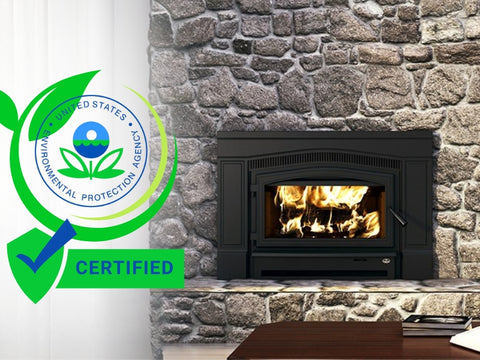
As gas fireplaces continue to evolve, they offer homeowners not only a source of warmth but also an opportunity to enhance the comfort, style, and value of their homes. Whether you're drawn to the traditional charm of vented log fireplaces or the modern efficiency of ventless models, the advancements in technology and design ensure that there's a gas fireplace to meet every need and preference.
Conversion and Customization Options
The journey to selecting the perfect gas fireplace doesn't end with choosing between vented and ventless. Many homeowners find themselves contemplating conversion for various reasons, while others seek to customize their fireplaces to better suit their homes and lifestyles.
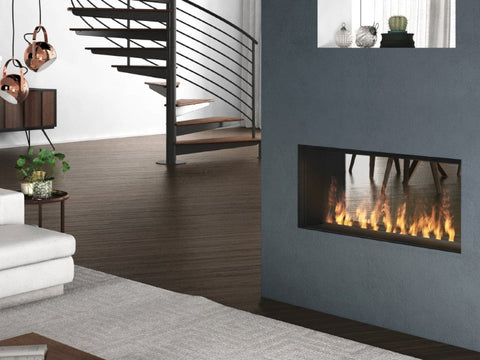
But if you're on the fence about converting, check out 100 of our modern fireplace renovation ideas.
Converting Fireplaces
- From Ventless to Vented: Converting a ventless fireplace to a vented system involves significant modifications, including the installation of a venting system or chimney. This process can be complex and costly but may be desirable for those seeking the traditional ambiance of a vented fireplace.
- From Vented to Ventless: Switching from a vented to a ventless fireplace is generally simpler, as it removes the need for external venting. However, it's crucial to ensure that the conversion aligns with local building codes and safety standards.
Customization Options
Customizing your gas fireplace allows you to align its appearance and functionality with your personal preferences and home décor:
- Aesthetic Enhancements: Choose from a variety of logs, stones, beads, or glass pieces to create the desired look.
- Functional Upgrades: Incorporate blowers for improved heat distribution, remote controls for convenience, or even variable flame controls for ambiance adjustment.
FAQs
To help you navigate the decision-making process, here's a compilation of frequently asked questions:
Q: Which is more energy-efficient, vented or ventless gas fireplaces?
A: Ventless gas fireplaces are generally more energy-efficient than a vent-free gas fireplace, as they convert nearly all the fuel into heat for the room.
Q: Can I install a gas fireplace in a bedroom or bathroom?
A: No, ventless fireplaces have restrictions on installation in bedrooms and bathrooms due to safety concerns. Vented options may be permissible but always consult local codes and regulations.
Q: How often should gas fireplaces be serviced?
A: Annual inspections by a qualified technician are recommended for both vented and ventless fireplaces to ensure safe and efficient operation.
Conclusion
Choosing between a vented or ventless gas fireplace is a decision that impacts not only the warmth of your home but also its ambiance and air quality. Vented fireplaces offer the traditional look and feel of a wood-burning fireplace with safer emissions, while ventless options provide superior efficiency and flexibility in installation.
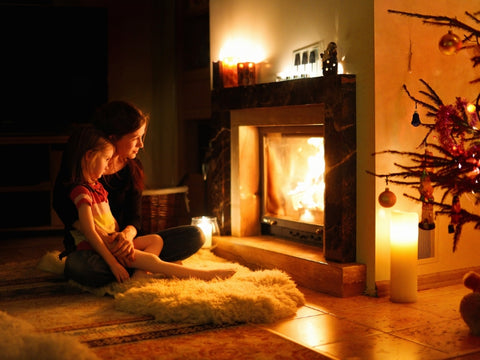
Conversion and customization options allow homeowners to tailor their fireplaces to their specific desires, ensuring that the final choice enhances their living space. By considering the insights and advice shared in this guide, you're well-equipped to make an informed decision that will bring comfort, warmth, and style to your home for years to come.
Whether you're drawn to the charm of vented fireplaces or the practicality of ventless models, remember that safety, efficiency, and compliance with local codes should guide your decision. With the right gas fireplace, you can enjoy the perfect blend of form and function, creating a cozy and inviting atmosphere in your home.
